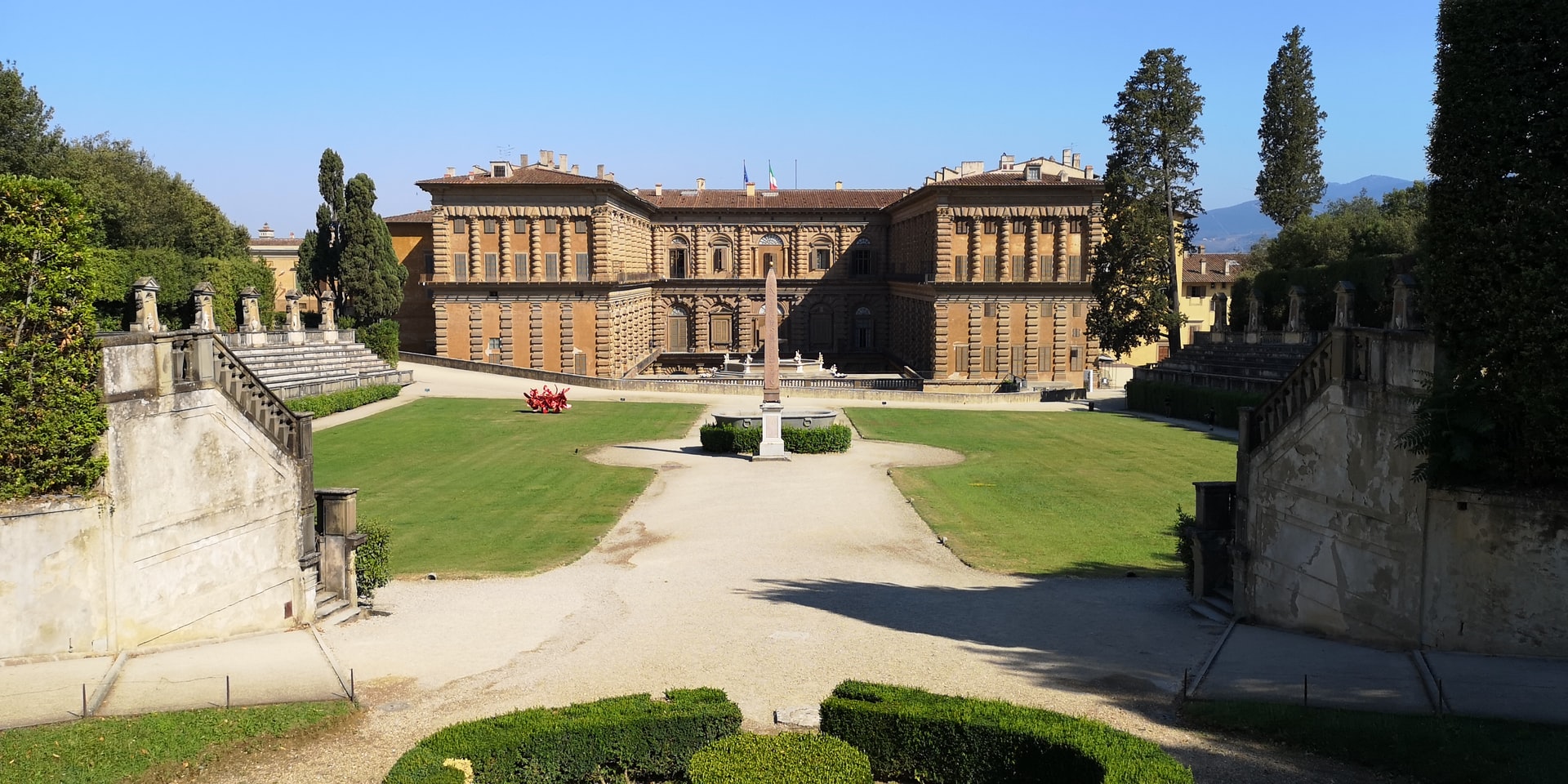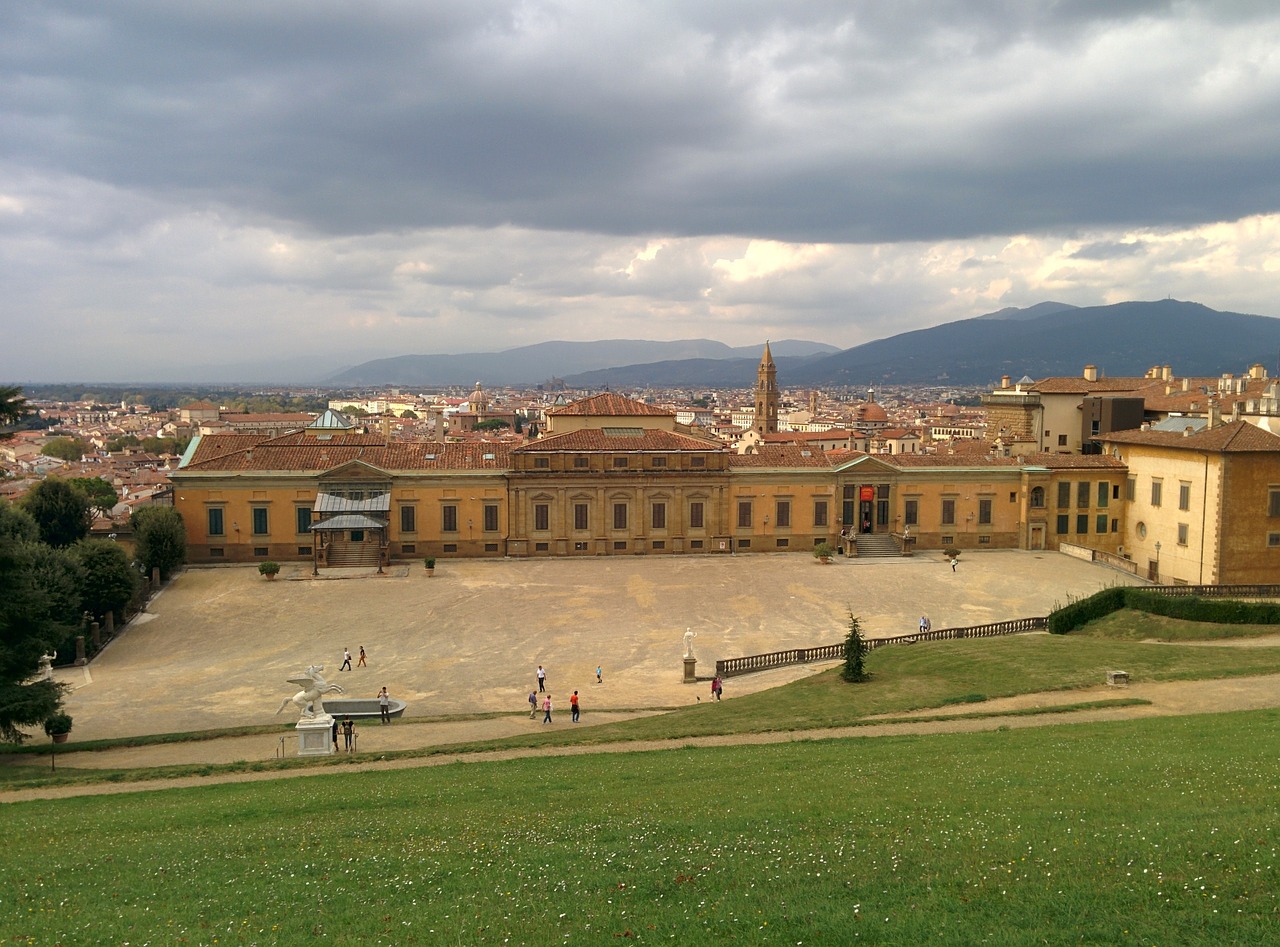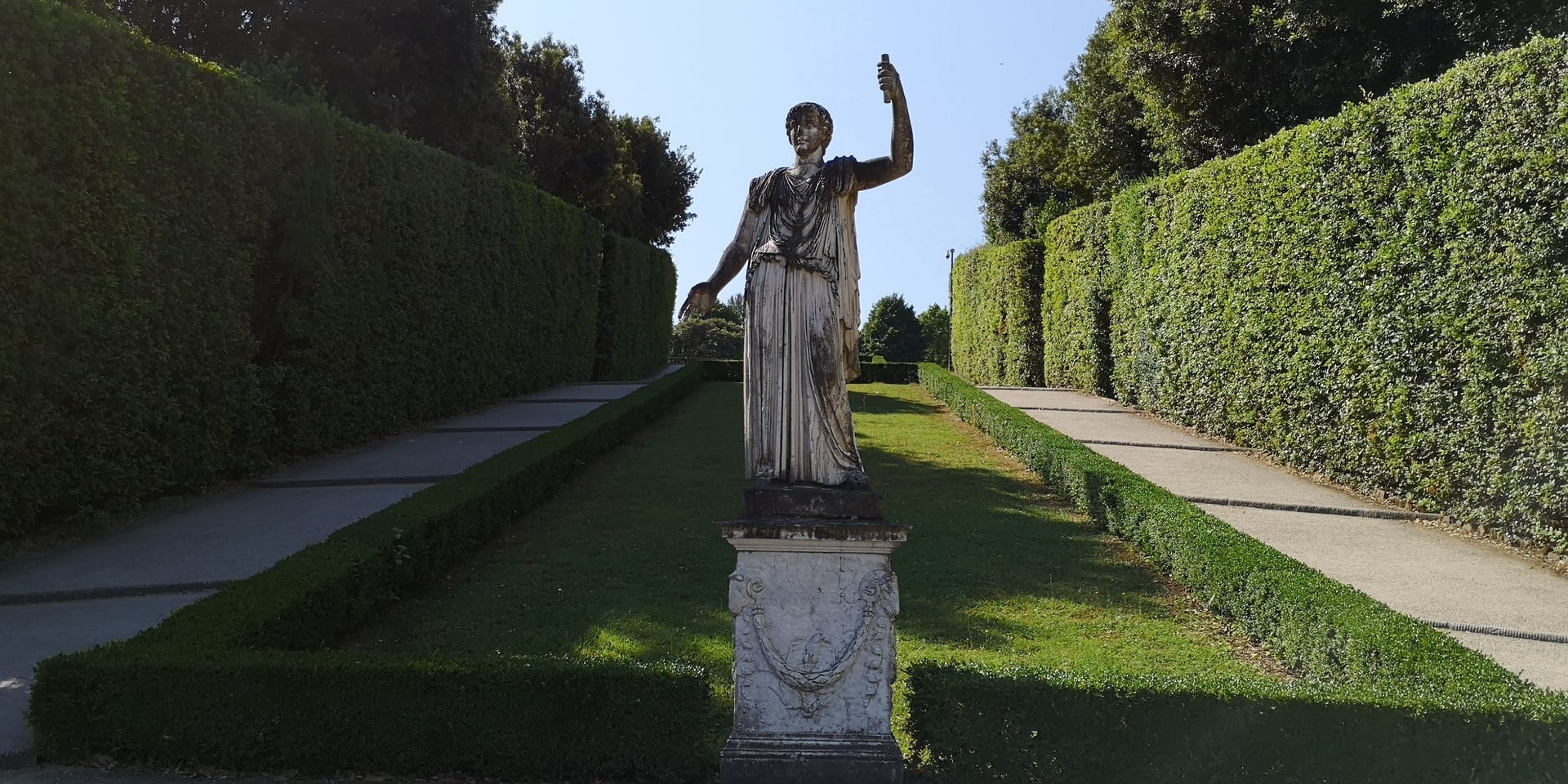Pitti Palace and Boboli Gardens
On the left bank of the River Arno, for more than five hundred years, stands an ancient Renaissance palace, majestic in its austerity: a symbol of power, power and wealth.
It is a Florentine palace that for four hundred years served as the residence of three ruling dynasties: the Medici, the Habsburg-Lorena and the Savoy. The palace still bears the name of its first owner, the Medici rival, the Florentine banker Luca Pitti, who built it as his private residence in the mid-15th century.
During unfortunate political intrigues Pitti lost his power and wealth, the palace was left unfinished and in 1550 it was purchased by the Medici: Eleonora Toledo, wife of the Grand Duke of Tuscany Cosimo I, bought the palace and made it a representative family residence.
Construction work began, resulting in a Vasari corridor connecting the Pitti Palace with the Old Palace (Palazzo Vecchio) across the river and the splendid Boboli Gardens laid out around the walls of the palazzo.
After the Medici, two centuries later, new owners settled in the palace: the great dukes of Tuscany became members of the Habsburg-Lorena family. Florence then became the capital of the Kingdom of Italy for 6 years and Palazzo Pitti became the royal palace of the ruling Savoy dynasty, who in 1919 transferred the palazzo and the adjacent park ensemble to the state ownership.
There are several noteworthy museums on the three floors of the palazzo.
The Palatine Gallery (which means "palace gallery") and the luxurious Royal Apartments, decorated with antique furniture and frescoes, occupy the entire second floor of the palace. There is a collection of Italian painters of the Renaissance and Baroque period, among which the greatest concentration in one place of Raphael's works - the collection has 11 canvases of the master. Titian, Rubens, Caravaggio and many other outstanding masters of the brush are widely represented. It is noteworthy that the Palatine collection of paintings is a preserved example of an art gallery, where the works are arranged as they were once placed according to the fashion of the time: the so-called "trellis hang", when paintings occupy the entire surface of the wall up to the ceiling.
The Gallery of Modern Art presents the works of Italian artists, whose works span the end of the 18th century and the beginning of the 20th century, an important place among which belongs to the works of Macchiallo - which means "those who painted in spots" - a kind of Italian Impressionists - and their founder, Giovanni Fattori.
The Museum of Fashion and Costume has collections of outfits and accessories from different epochs, among which a special place belongs to the mourning garments of the 16th century that belonged to the owners of the palace: Eleonora Toledo, her husband Cosimo I and their son.
The Treasure Room of the Grand Dukes is in the former summer apartment of the Medici family, this part of the museum displays vases made of precious stones, crystal, amber and ivory. Completing the collection are silverware from the Dukes of Loren and a collection of jewelry from the 17th and 20th centuries.
The pearl of the ensemble are the Boboli Gardens, a huge park laid out during the Medici Era in the style of the Renaissance, which is an open-air museum. Fountains, sculptures, decorative architecture, and fanciful artificial grottoes, the Coffee House, a rare example of Rococo style in the Renaissance capital, and the Limonaia, a greenhouse where caring gardeners still grow citrus fruits today.
A tour of the Pitti Palace and Boboli Gardens is a magical experience of luxury and wealth, where the magnificently decorated interiors make you feel if not like an occupant of the palazzo, then like one who has miraculously found himself in a residence while its owners have been away for a while.




